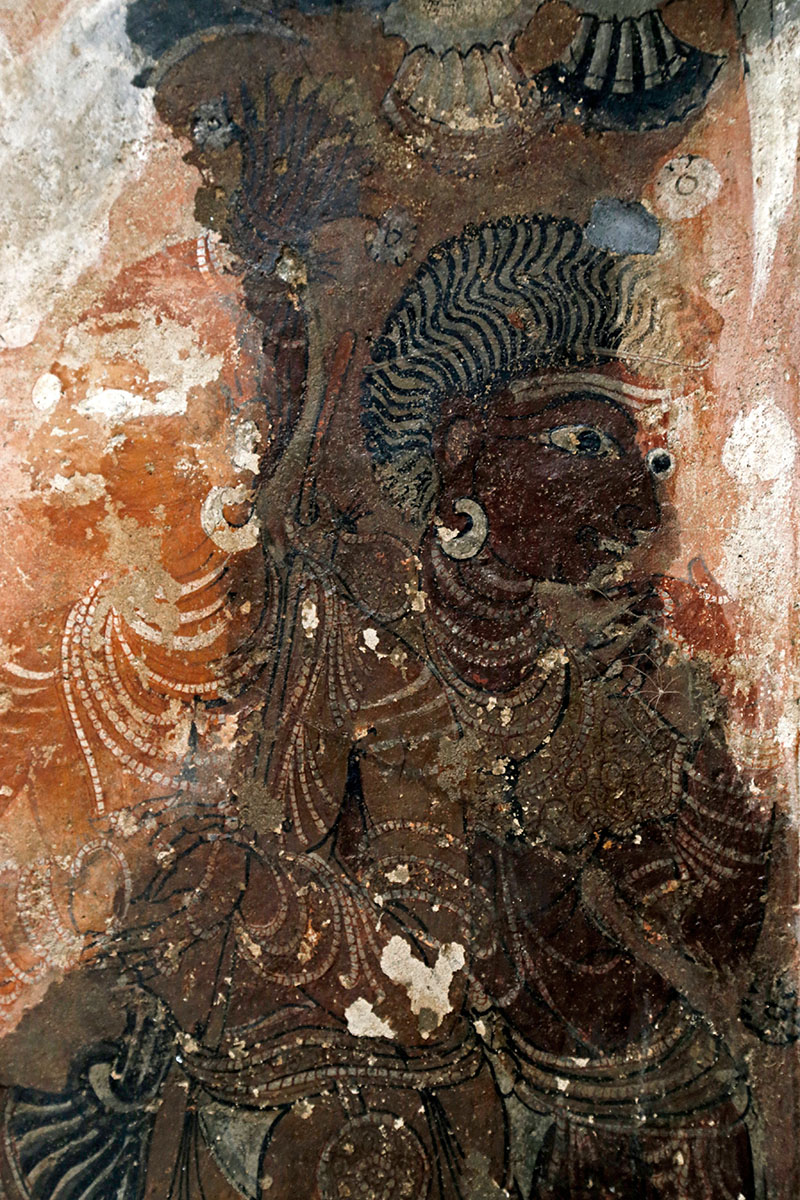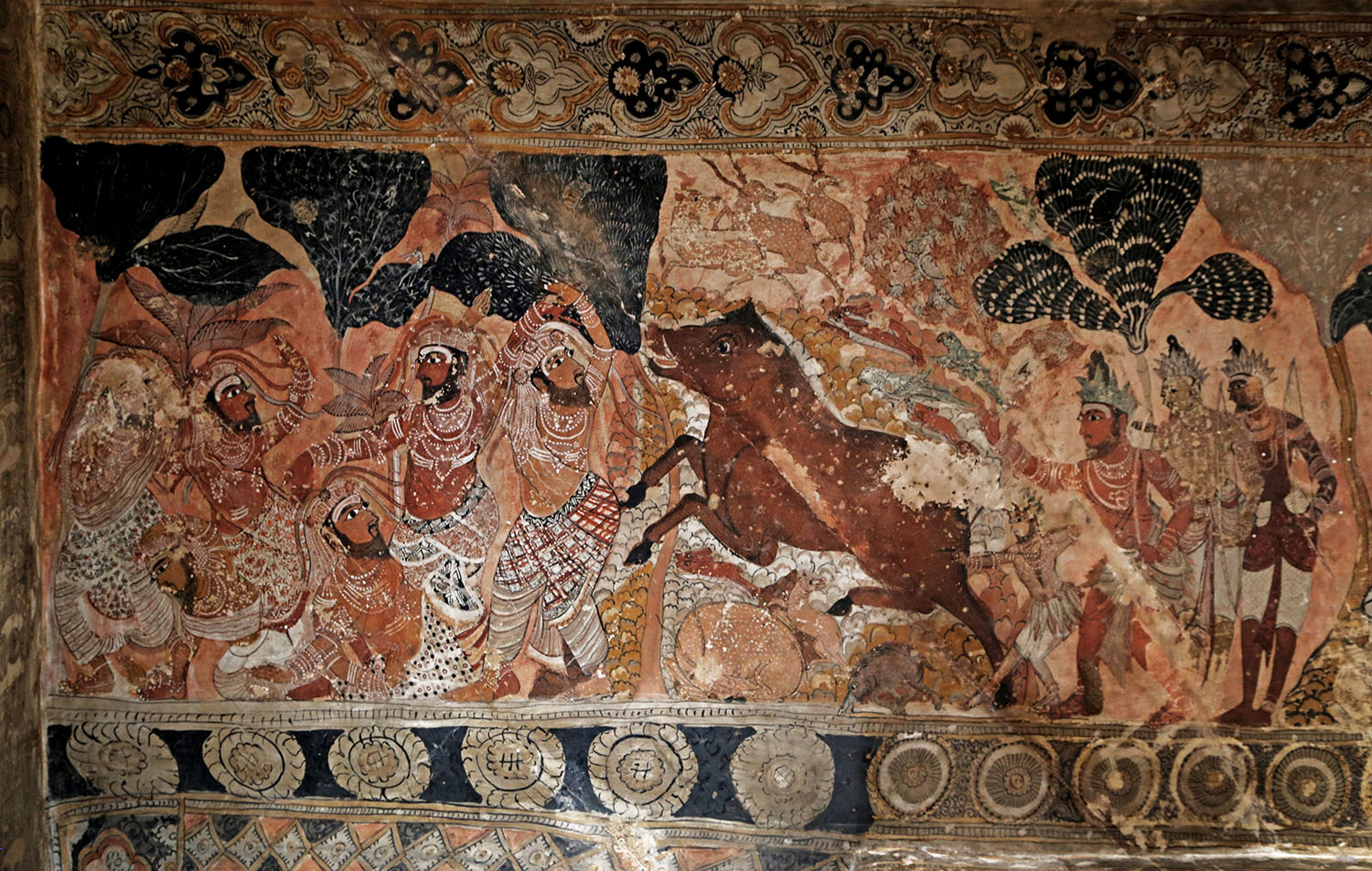Paintings on the ceilings of Virabhadra temple dedicated to the god Shiva in Lepakshi, Andhra Pradesh, the Lepakshi murals are among the most significant surviving pictorial paintings of the Vijayanagara empire in southern India.
The temple was constructed by the brothers Virupanna Nayaka and Viranna, governors of Penukonda during the reign of the Vijayanagara ruler Achutaraya in the middle of the sixteenth century. The murals were completed around the same time. They cover the ceilings of the mahamandapa and various shrines in the temple, illustrating a range of themes from mythology and courtly life. These include scenes from the Ramayana and Mahabharata, as well as texts such as the Puranas.
The compositions are rendered in long panels that align with the bayed columns of the temple’s mandapas, verandahs, and corridors. As a result, the lengths of painted strips vary vastly, ranging from 5 metres to as long as 25 metres in length.
The ceilings of the temple’s mahamandapa feature the largest composition. At its centre is a colossal figure of Virabhadra, attended by Viranna, his wife and the ram-headed Daksha, prostrating at the God’s feet. The composition includes thirteen panels sectioned into several sub-panels. They depict scenes from Lepakshi’s sthalapurana, mythological narratives, and a procession where a guru is carried in a palanquin by guards. On all four edges of the mural are decorative paintings of mythical animals, birds, devotees, dancers, and musicians.
The Lepakshi murals were made by first plastering the granite surfaces with the sandy clay from nearby riverbeds, red ochre and lime powder mixed with liquid molasses. The plastered area was sketched with scenes to be drawn using red ochre, which were later coloured and polished with fine black outlines. Most figures are depicted in profile, with sharp noses, pointed chins, and projecting eyes. The colours used incorporate varied tones of earthy red, black, green, yellow-ochre, shades of white and grey, and few instances of blue-green.
Despite their mythological focus, the Lepakshi murals document the social and religious life of the period, depicting a variety of occupations. People are adorned in costumes, jewellery, and headgear. The murals have served as a valuable source of information on Vijayanagara material culture: different styles of sari drapery have been noted, with the textile patterns varying between floral, striped, and chequered. The natyamandapa depicts a group of male courtiers engaged in worship, dressed in white tunics with tall conical caps, respectively called kabayi and kullayi. Both articles of clothing have Islamicate associations, with deep roots in the Persianate world.









